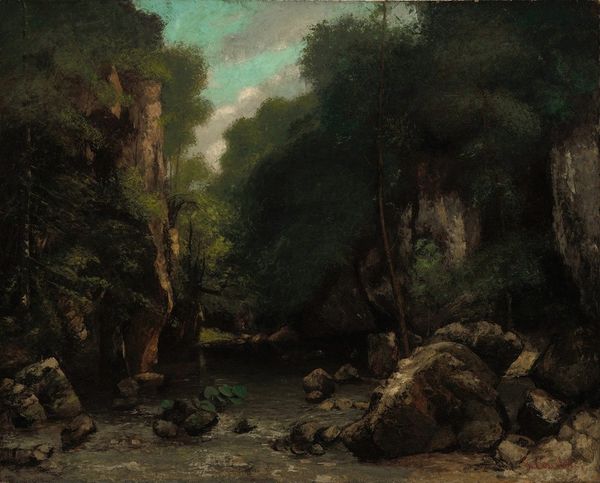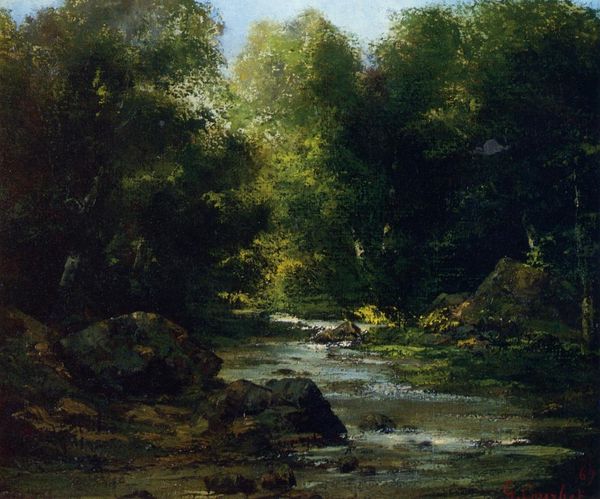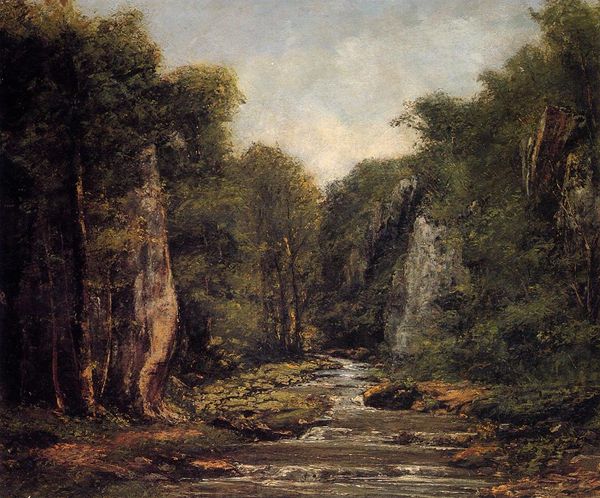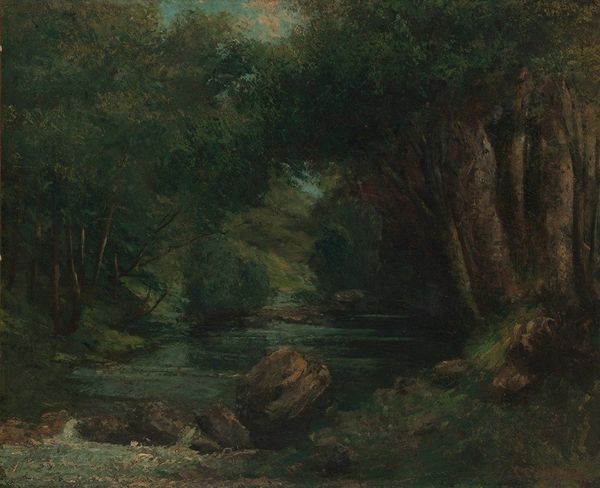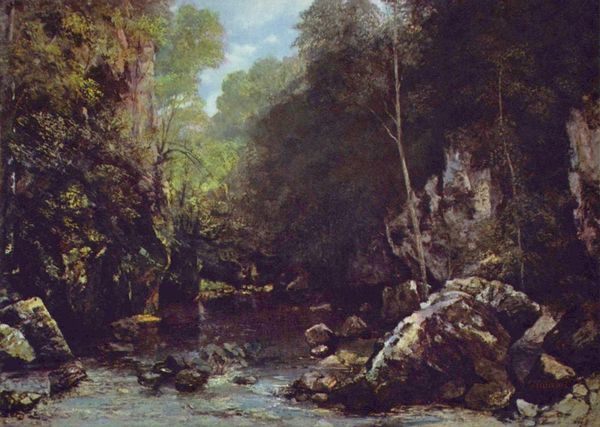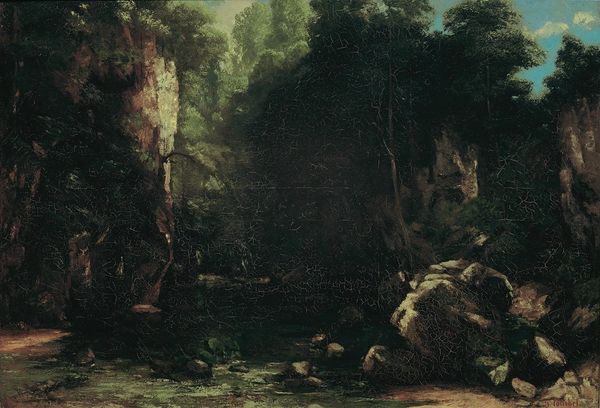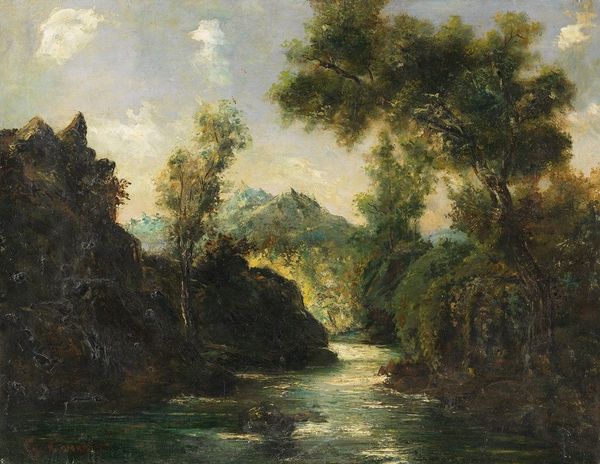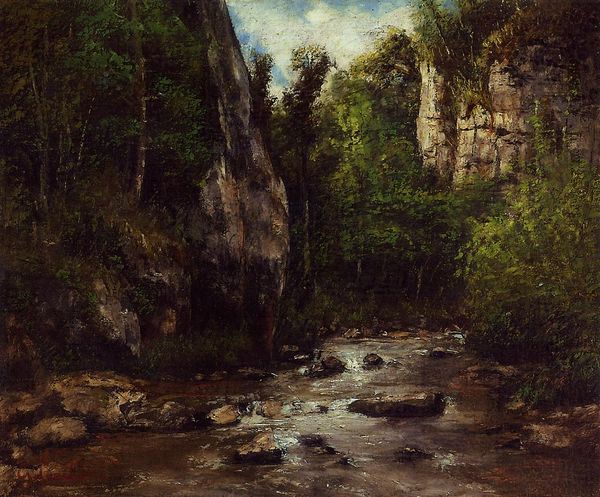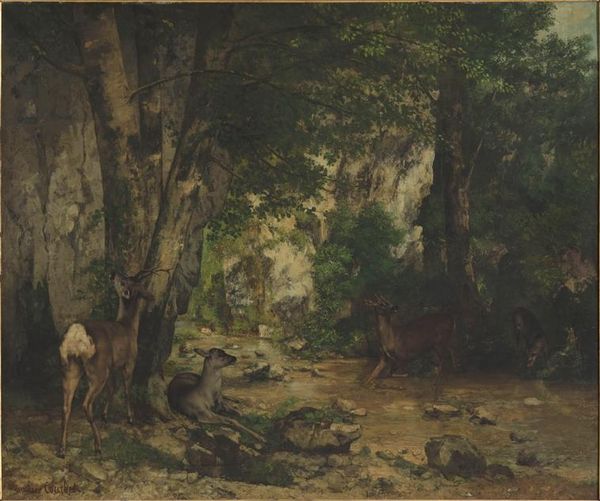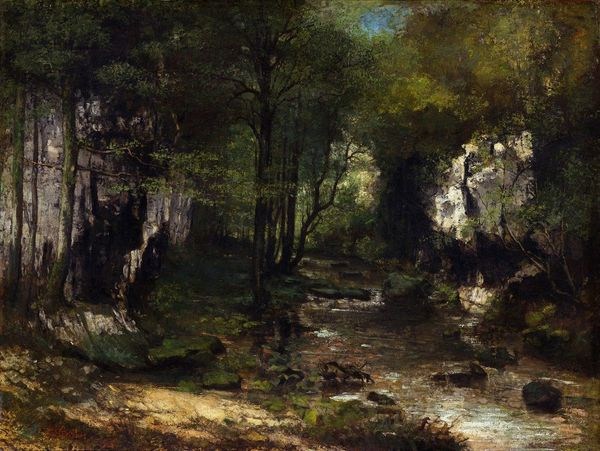
Dimensions: 94 x 135 cm
Copyright: Public domain
Editor: We're now looking at Gustave Courbet's "Solitude," painted in 1866. It's an oil painting, depicting a wooded landscape. The overwhelming feeling is one of being enclosed, almost claustrophobic. What do you see in this piece beyond just a pretty landscape? Curator: This isn't just a detached view of nature, but a socially charged statement, isn’t it? Courbet's Realism often aimed to depict life as it *is*. Consider the Salon system of the time, favoring idealized landscapes or grand historical narratives. How does Courbet defy those expectations here, do you think? Editor: Well, it feels unidealized for sure. There's a sense of raw, untamed nature, not picturesque at all. And it does feel very insular; it challenges any notion of human mastery over nature. It's as if you're supposed to acknowledge the scene, and that nature doesn't actually care if you are or not. Curator: Precisely. Think about the rising industrialization of France during Courbet's time. These kinds of forested escapes are vanishing. He could be critiquing the socio-political trajectory of France, presenting nature in its unvarnished reality as something precious and increasingly lost. The 'Solitude' isn't just of the place, but a feeling perhaps increasingly pertinent to an industrializing society. Does it give you any sense of why Courbet may have called this realism instead of landscape? Editor: Absolutely, this discussion's widened my understanding, far beyond the surface aesthetics. It now carries socio-historical implications, a kind of social commentary. Curator: Exactly. Recognizing the forces influencing its creation elevates our interpretation beyond mere aesthetics.
Comments
No comments
Be the first to comment and join the conversation on the ultimate creative platform.
